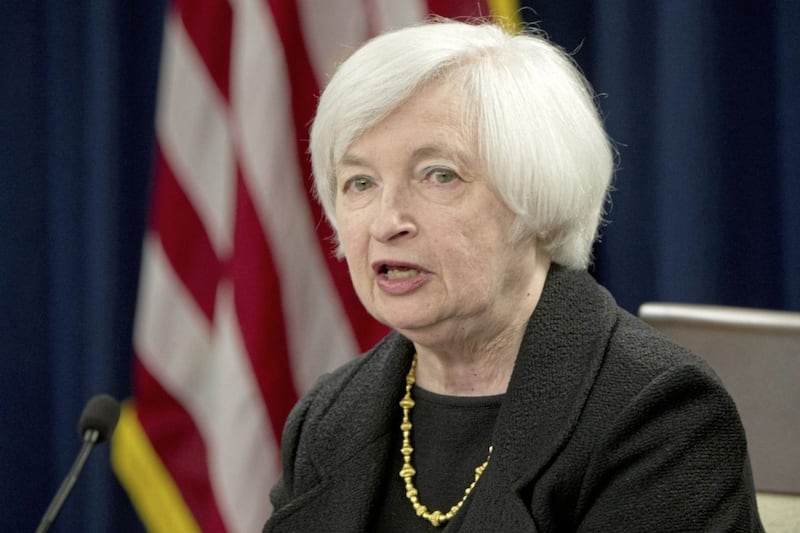“NOTHING changes on New Year’s Day” says the U2 song - and this certainly was the case in financial markets during the first week of 2016.
Old worries about the slowdown in the Chinese economy and sluggish global growth continued to weigh heavily on risk appetite last week. World stock markets suffered heavy losses, with chaotic and truncated trading on Chinese equity markets, which fell by 10 per cent in the week. The negative sentiment spilled over into commodity markets, with oil prices continuing to fall - reaching 12-year lows below $34 dollars a barrel.
These developments have reinforced the market view that monetary policy will remain very accommodative everywhere. Further loosening would seem likely in China, with continuing quantitative easing in the eurozone and Japan, while the Bank of England is now expected to keep rates on hold this year.
The financial markets remain firmly of the view that the US Federal Reserve will not be able to deliver its projected rate hike path of 0.25 per cent per quarter in 2016. Thus, bond markets remain well underpinned, with yields moving lower in the first week of the year as the ‘risk-off’ tone continues to dominate.
It is not all doom and gloom, though, with the latest data suggesting the recovery in advanced economies remains intact. The US employment report for December was exceptionally strong for a third consecutive month. Meanwhile, data out of the eurozone suggest that the recovery there is gathering some momentum, with good PMI and EC surveys for December as well as improved labour market and industrial orders figures for November.
The data/events calendar is relatively light in the week ahead. However, there are still some important releases due. In the US, the focus will be on the key consumer side of the economy. Retail sales (measured in nominal value) have been weighed down by the falls in oil prices and lower costs for imported goods due to the stronger US dollar. This will likely remain the case again in December. As such, growth in sales is likely to have been broadly flat in the final quarter of last year. However, it must be noted that real consumption, which feeds into GDP, has been solid. The timelier Michigan measure of consumer sentiment will provide an early read of the strength of the sector as 2016 gets underway.
US industrial output data for December is also due. A number of factors weighed heavily on the data in 2015, including the fall in oil prices as well as the stronger Dollar. In recent months, mild winter weather has further dragged down utility production. Year-on-year growth was negative (-1.2 per cent) in November for the first time in six years and it looks set to have remained that way in December. In terms of US monetary policy, the Fed ‘Beige Book’ is due on Wednesday and this will form the economic backdrop to the next FOMC meeting (January 26-27).
Closer to home, the Bank of England Monetary Policy Committee (MPC) is due to hold its regular monthly policy meeting this week. The MPC has continued to indicate that given the still very weak nature of inflation - among other factors, it is in no hurry to start hiking UK interest rates. The meeting minutes will be closely scrutinised for any fresh insights into the current thinking of the MPC with regard to the time-line for policy tightening.
The financial markets believe that it could be early 2017 before the MPC begins to hike interest rates. As a result, the MPC meeting is likely to continue to be a non-event. Data-wise, industrial output for November is the only release of note. It has remained relatively weak in recent months, due to the under-performance of the manufacturing component. Output was broadly flat in October and a similarly subdued result is expected in November.








